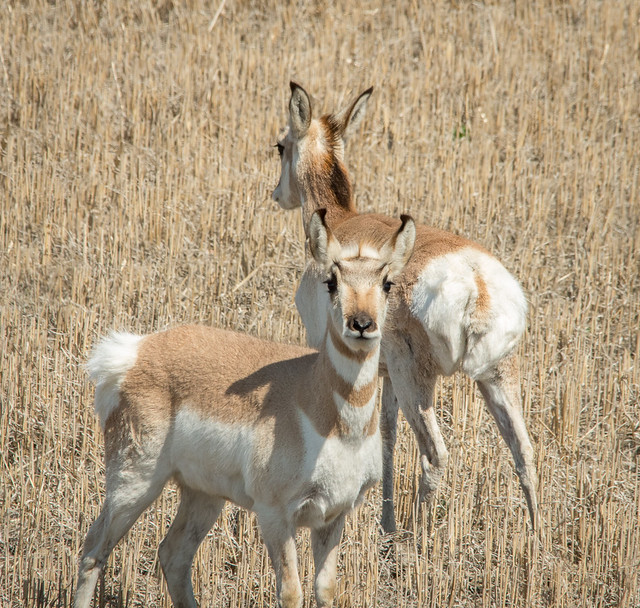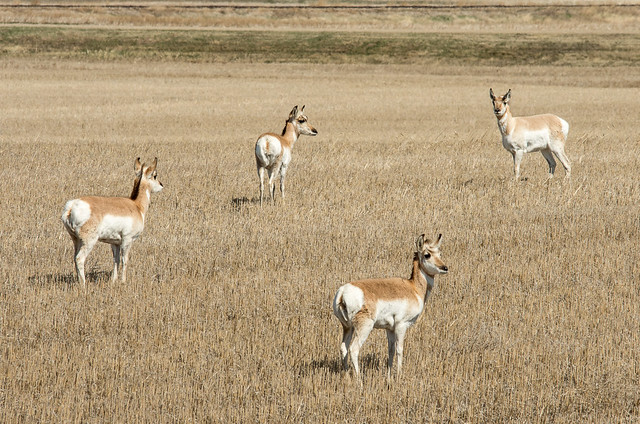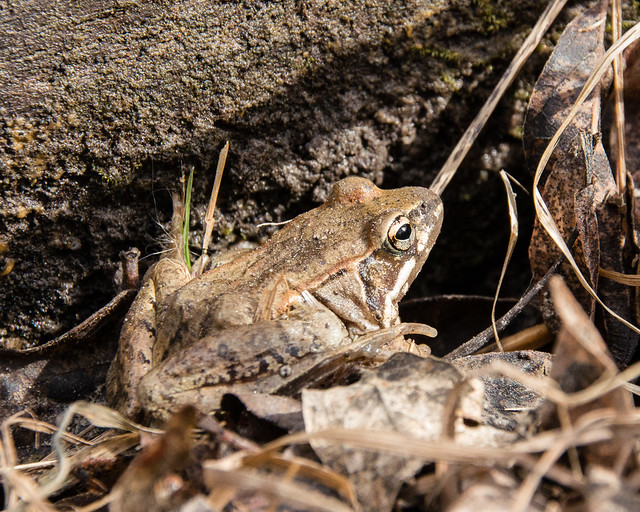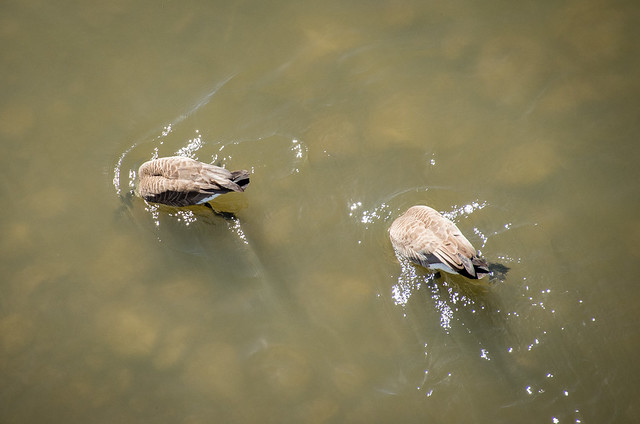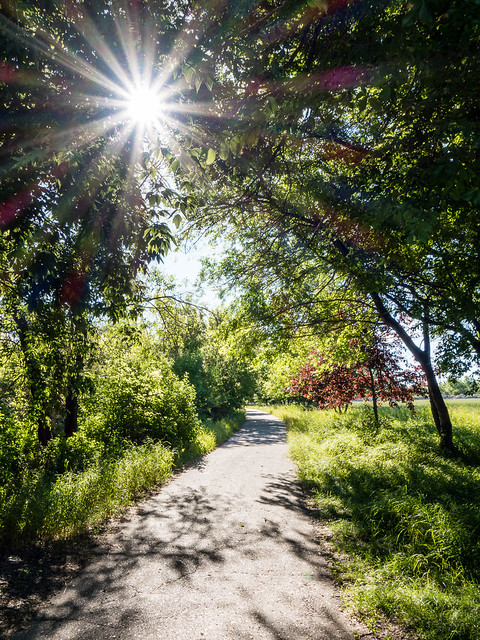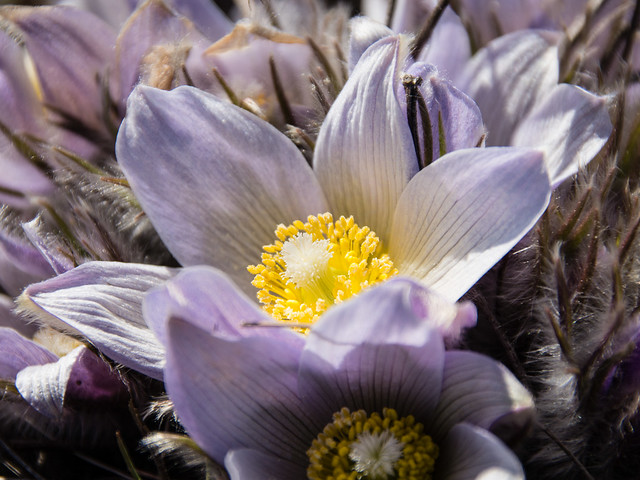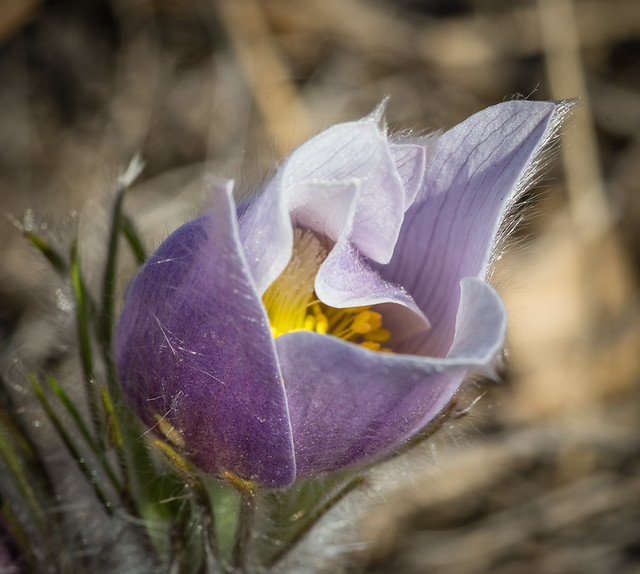Tuesday, 28 April 2015
EcoSask News, April 28, 2015
Events
Green Drinks Regina, May 6
The Ecomuseum and Blue Dot edition of Green Drinks Regina will begin at 5:30 pm, May 7, at Abstractions Café. Free pea seeds!
Wildlife Rehabilitation Society AGM, May 12
The Wildlife Rehabilitation Society of Saskatchewan will hold its annual general meeting in Saskatoon from 7-9 pm, May 12.
Paddle Canada Canoe Certification Course, May 16-18 (Saskatoon)
SaskOutdoors is offering a Paddle Canada Lake Canoe Skills (flat water) Certification course in Saskatoon, May 16-18, 2015.
Home Green Home, May 19
Braden and Ali Turnquist will discuss their experience building a passive house and will share their experience in designing an energy-efficient home, including the products and appliances at 7 pm, May 19, at the Frances Morrison Library.
Indigenous Pollinator Garden Design Workshops, May 24
Learn about the native plants that support pollinator species, such as birds, butterflies and bees, at Wanuskewin on May 24. Only 5 tickets left!
Field Trips
Golden Eagles
Apr. 30, 8 am – Brightwater Marsh and Blackstrap
Other Nature Society Field Trips
May 2, 10-11 am – Jane’s Walk through President Murray Park
Sundays in May, 7-9 am – MVA Trail Bird Walk (ideal for beginners)
May 13, 7-9 pm – Richard St. Barb Baker Park Walk
Check the Saskatoon Nature Society’s website for full details (e.g. some trips require rubber boots, others will be cancelled if the weather is bad).
Additional upcoming events can be found on the EcoFriendly Sask Calendar
Congratulations!
Congratulations to Saskatoon CarShare Cooperative on receiving the 2015 Environmental Activism Award from the Saskatchewan Eco Network.
Congratulations to The Hollows on receiving the 2015 Waste Minimization Award from the Saskatchewan Waste Reduction Council.
Stark & Marsh, Swift Current, are the first business to receive an environmental award from the Saskatchewan Association of Watershed Stewards.
EcoFriendly Action Grants – April 2015 (6 grants - $3,500)
Melfort Cross-Country Ski Club - $500 to repair the ski trails in Fort a la Corne provincial forest
Karen Farmer, Brit MacDonald (SFLBC), Prairie Garden Seed - $500 to establish the Saskatoon Seed Library
McDermid Community School Kindergarten (Regina) - $500 to set up raised beds for a school garden
Macklin Daycare Inc. - $500 to set up raised garden beds and a compost bin
Resort Village of Chorney Beach - $500 to purchase fruit trees, shrubs, and plants for a Nature Sanctuary
Nature Regina - $1,000 to purchase new signage for their Hidden Valley Sanctuary
EcoFriendly Takes a Break
EcoFriendly Sask will be taking a short sabbatical as Penny is getting a bright-new, shiny-new hip. Talk to you again soon!
EcoSask News is a weekly round-up of local news and events. Email us if you have items you would like us to include.
You can follow EcoFriendly Sask by liking us on Facebook, following us on Twitter, or by email (top right corner).
Thursday, 23 April 2015
Environmental Activism: From Dr. Seuss to Financial Analysis
Immersed in a culture that promotes non-stop economic growth, shopping and urban life, it can be difficult to take a different path by advocating for nature, renewable energy, and a sustainable lifestyle. The tactics Saskatoon activists employ are as diverse as the seasons, but there is a common factor. They all care passionately about the future of the land.
It would be foolhardy to attempt to catalogue all the individuals and groups. Here is a look at just a handful that have adopted very different approaches to increasing public awareness and changing public policy.
Save Our Trees – in Photo and Verse
A new voice emerged on Twitter last year. @LoraxYXE writes in verse, posting photographs of trees that are at risk from Saskatoon’s ongoing construction boom. It’s funny; it’s visual; it’s different. And it’s caught the eye of the media, of City Councillors (Charlie Clark responded to one of their tweets in rhyme), and hopefully of City administration.
 SOS Elms Coalition was established to protect the health of Saskatchewan’s community trees, particularly from the threat of Dutch Elm Disease. They’ve recently released an updated guide to some of Saskatoon’s most memorable trees (Ohio buckeye, black walnut, gingko). The guide includes colour photographs, interesting anecdotes, and a map pinpointing the location of 24 individual trees as well as five tree destination sites.
SOS Elms Coalition was established to protect the health of Saskatchewan’s community trees, particularly from the threat of Dutch Elm Disease. They’ve recently released an updated guide to some of Saskatoon’s most memorable trees (Ohio buckeye, black walnut, gingko). The guide includes colour photographs, interesting anecdotes, and a map pinpointing the location of 24 individual trees as well as five tree destination sites.In our rush to get from one place to another, we so often fail to “see” the beauty around us. I know that I am going to be taking a slow tour in order to appreciate all the trees mentioned in the guide.
A Seat at the Planning Table
The Northeast Swale is an ancient river channel connecting native prairie uplands and linked wetlands and is home to ducks, deer, and a wide variety of plants. It ensures water drainage and retention and clean air. Most important of all, it’s a refuge for native plants, animals, and insects.
It is, however, threatened. New subdivisions, roads and bridges are encroaching on it from all sides. A group of concerned citizens stepped forward to ensure that the Swale was valued and protected.
The Northeast Swale Watchers is a diverse group with a tremendous amount of expertise in areas ranging from wetlands and wildlife to light pollution and native vegetation. They meet regularly with City administrators to discuss municipal policies and raise concerns. Their approach is non-confrontational, choosing to share their knowledge to help the City respond to emerging issues. But they’re not afraid to ask difficult questions or to push the City to go further.
They have had some success. The City of Saskatoon and the Meewasin Valley Authority recognized their expertise and invited them to assist in developing a resource management plan for the Swale. City planners take time to listen and share information with the Swale Watchers. There were five different municipal officials at a recent meeting of the Swale Watchers.
The group keeps a close eye on development activities in and around the Swale and are quick to report any possible transgressions. They are also planning public education activities to inform residents in neighbourhoods adjoining the Swale of the rich resources on their doorstep to be respected and enjoyed.
Municipal boundaries are artificial divisions on an integrated natural landscape. The Swale Watchers are currently expanding their focus to the regional level in order to ensure that biodiversity is protected and promoted in the regional planning process that is now underway.
Wild About Saskatoon
For one week each spring, over 80 local groups work together to offer a varied program of activities that celebrate nature in Saskatoon. There is poetry and parades, bird walks and tree plantings. With activities for all ages, covering all parts of the city, the NatureCity Festival encourages people to head outdoors and enjoy our natural surroundings.
The NatureCity Festival, sponsored by Wild About Saskatoon, is unique in its ability to bring groups together in a common cause. The focus of many of their activities is on enjoying our natural surroundings, acknowledging that people won’t protect something they don’t know and love. But they also work hard to introduce new information and ideas to community discussions around urban biodiversity. They’ve sponsored workshops on urban planning, providing an opportunity for municipal administrators and nature advocates to learn from experiences in other cities.
The 2015 NatureCity Festival is emphasizing the health benefits of being outside and is fostering partnerships with schools and medical institutions.
Urban Agriculture
Plant a garden and you quickly learn to respect nature. There’s no controlling the weather, and worms become valuable partners in preparing a rich soil in which to grow your plants. School and community gardens play an important role in understanding that carrots are pulled from the ground, not just purchased in neat plastic bags in the grocery store.
Our food supply is currently reliant on technology and transportation. Some groups are seeking to increase local food security through initiatives such as the Saskatoon Seed Saving Library, which will ensure a local supply of seeds as well as encouraging people to grow healthy food.
Permaculture experts, such as the members of Permaculture Saskatchewan, love to get their hands in the dirt to create a garden, but their focus is more holistic. As Joanne Blythe explains, ““You look at the whole situation, observe all the opportunities, and choose the ones which will work best together. You’re not just growing carrots or raising chickens. You’re developing an ecosystem. Heat from the chicken coop can warm the greenhouse, and the manure will fertilize the garden.” Their focus is on problem-solving and finding creative solutions that will benefit the planet and all its creatures.
Challenging Authorities
 Festivals and gardening are fun. But they’re not enough. We need activists who are prepared to question authority and present opposing views.
Festivals and gardening are fun. But they’re not enough. We need activists who are prepared to question authority and present opposing views.Saskatchewan Community Wind began with a vision of establishing a community-owned wind farm near Saskatoon. Meeting with resistance, they evolved into a provincial advocacy organization to promote an increased focus on wind energy and community-owned wind projects.
Saskatchewan lags far behind other provinces and countries in adopting renewable energy projects. The American wind industry is showing unprecedented growth, with neighbouring states such as North Dakota leading the pack. In contrast, Saskatchewan has chosen to focus on carbon capture and sequestration, maintaining its reliance on coal, the most carbon-intensive fossil fuel posing significant health hazards (via The Economist).
SaskWind has been particularly vocal in expressing its opposition to the Boundary Dam Carbon Capture & Sequestration (CCS) project. They haven’t just expressed an opinion. They’ve prepared a detailed financial analysis of the project, making the economic case for abandoning coal and emphasizing renewables. They’re meeting SaskPower and the government on their own terms by talking dollars and cents, particularly important at this time when SaskPower is considering two additional CCS units at Boundary Dam.
 Political Willpower
Political WillpowerMunicipal, provincial, and federal elections loom on the horizon. Many of us are disheartened and disillusioned about the current political climate and it’s easy to question the value of a single vote. However, elections can be an opportunity to expand the conversation beyond snow clearing and business development and to advocate for urban biodiversity and wetlands, renewable energy, and dark sky policies.
On a national level, GreenPAC is establishing a “panel of independent, non-partisan experts who will analyze candidates from all major political parties and endorse environmental champions.” It will be interesting to see if similar advocacy efforts are undertaken at the municipal and provincial levels.
Further Information
Giving Nature a Voice at the Urban Planning Table: Saskatoon’s Northeast Swale
Permaculture: Practical Solutions for Restoring Healthy Ecosystems
SES Solar Co-operative
Honouring Saskatoon's Trees: SOS Elms Coalition
Tuesday, 21 April 2015
EcoSask News, April 21, 2015
Events
Environmental Film Festival, Apr. 24-26
The 2015 Saskatchewan Eco-Network Environmental Film Festival will be held at the Roxy Theatre: 7-9 pm, Apr. 24, 12-9 pm, Apr. 25, 12-6 pm, Apr. 26. The full line-up of films is available online and includes Disruption, Burning Water, and Arctic Defenders.
SK Paddling Symposium, Apr. 25
The 2015 Saskatchewan Paddling Symposium offers a wide range of speakers and workshops. If you're daydreaming about heading out on the water, be sure to attend.
Soil Workshop & Movie, May 2 (Regina)
Participate in a Jane's Walk, bless St. Mary's garden, enjoy a community potluck and watch the film, Symphony of the Soil, on May 2, at St. Mary’s Church, Regina.
Jane's Walk, May 2 (Saskatoon & Regina)
Explore Saskatoon and Regina with one of the many walks led by local residents as part of Jane’s Walk on May 2.
Saskatoon walks include an Ecological and Cultural History of the Meewasin Valley, Songbirds in President Murray Park, and Stonebridge: The Good, the Bad, and the Ugly.
Walks in Regina include Getting to Know the Wascana, Bike Regina’s 3rd Annual Jane’s Ride, and a Co-Housing Development in Canterbury Park.
Wild Mothers Gala, May 9
CFL star George Reed is the guest speaker at a fundraising dinner on May 9 organized by Living Sky Wildlife Rehabilitation.
Great Canadian Birdathon at Last Mountain Lake, May 9
Nature Saskatchewan’s Last Mountain Bird Observatory is hosting a Great Canadian Birdathon event at 9 am, May 9, to be followed by a barbecue.
Wings Over Wascana Fundraising Banquet, May 12 (Regina)
A fundraising banquet for Wings Over Wascana will be held at 5:30 pm, May 12, at the Conexus Arts Centre. There will be a presentation by Myrna Pearman, Ellis Bird Farm. Proceeds help to support conservation, public education, and awareness of the Wascana Marsh habitat.
Additional upcoming events can be found on our Calendar.
News
Nipawin Bible College expects to cut its current $17,000 yearly electrical bill down to zero, thanks to 399 new solar panels
A Regina store has stopped selling bottled water and is giving away tap water instead
A growing body of scientific research links fracking and earthquakes
EcoSask News is a weekly round-up of local news and events. Email us if you have items you would like us to include.
You can follow EcoFriendly Sask by liking us on Facebook, following us on Twitter, or by email (top right corner).
Sunday, 19 April 2015
Honouring Saskatoon's Trees - SOS Elms Coalition
Saskatoon Tree Tour
SOS Elms Coalition has published a full-colour, completely revised and expanded edition of their Saskatoon Tree Tour guide to some of Saskatoon’s special trees.
A map pinpoints the locations of the trees and each tree site’s page includes its address as well as background information and anecdotes.
The guide also lists a number of tree destination sites, such as the Memorial Avenue in Woodlawn Cemetery.
Copies of the Saskatoon Tree Tour are available by donation at the following locations:
Steep Hill Food Co-op, Broadway Avenue
The Better Good, Broadway Avenue
Wild Birds Unlimited, 8th Street
You can also send a request to soselms@soselms.org.
Kyla Ledingham has written a supplementary guide to some special trees at Innovation Place.
SOS Elms Coalition AGM & Speakers
SOS Elms Coalition is holding their annual general meeting on Sunday, April 26, 2015, from 2 to 4 pm at the Marr Residence, 326 11th Street East. Everyone is invited to attend and will receive a free copy of the Saskatoon Tree Tour.
There will be two guest speakers from the City of Saskatoon. Paula Kotasek-Toth, a Senior Planner with the Planning and Development Division, will provide a short overview of the current infill guidelines. Scott Kindrat, Urban Forestry Technician in Urban Forestry, will provide an overview of what they are doing to protect trees during the demolition and construction process.
Before I leave, almost without noticing,
before I cross the road and head toward
what I have intentionally postponed—
Let me stop to say a blessing for these woods:
for crows barking and squirrels scampering,
for trees and fungus and multi-colored leaves,
for the way sunlight laces with shadows
through each branch and leaf of tree,
for these paths that take me in,
for these paths that lead me out.
Michael S. Glaser
Thursday, 16 April 2015
SES Solar Co-operative
It takes 20-24 solar panels to meet the average household’s energy needs. Even if we wanted to try and produce our own electricity using solar, it would be hard to fit that many panels on a roof while at the same time getting good solar exposure for each panel. In addition, many of us live in apartments or condos or expect to move in the next few years and don’t want to invest in hardware that would be difficult to transport.
Fortunately, there is a solution. You can join Saskatoon’s first solar power co-operative, established by the Saskatchewan Environmental Society (SES).
Harnessing the Sun
Bill Wardell, a board member for the SES, has a 63-panel solar installation on his farm. “I’m very appreciative that we’re not taking power from coal, which is already causing serious greenhouse gas problems,” Bill says. “But not everyone has the space we have on our farm. The SES wanted to find ways for the grassroots to be involved in renewable energy production.”
Saskatchewan is one of the sunniest spots in Canada, so harnessing solar energy is a solid option. “Germany is only half the physical size of Saskatchewan and has 80 million people. They’re already meeting 27% of their electrical needs from solar, wind and biomass. And they only have 60% of Saskatchewan’s solar resource,” says Peter Prebble, SES Director of Environmental Policy. “So I’m confident Saskatchewan’s 1.1 million people can meet a large part of their future electricity needs from solar, wind and biomass.”
Generating Enthusiasm
The board of directors of the Saskatchewan Environmental Society began to explore opportunities for establishing a solar power co-operative several years ago. Their timing was good as in the fall of 2014 Affinity Credit Union initiated a social venture challenge.
The SES Solar Co-operative was one of three finalists and the eventual winner. They sold 46 solar panels and generated a huge amount of enthusiasm for their fledgling project. They also won the $50,000 grand prize. “We’re so grateful to Affinity,” Peter says. “They facilitated a process where people got really excited about the proposals. All three projects benefitted. Given the economics of our project, the donations and prize are much appreciated.”
Providing a Template
In establishing a solar co-operative, the Environmental Society had two goals. They wanted to create options for people who can’t undertake a full-scale solar installation. And they wanted to create a model that other groups could replicate.
Their focus over the past few months has been on obtaining articles of incorporation, drafting a preliminary set of bylaws, and appointing an interim board of directors.
Individuals become a member of the co-operative when they purchase a solar panel. This includes a common share that entitles them to vote. Members will also receive a preferred share based on the number of panels they’ve purchased, and the revenue from solar power generation will be distributed on the basis of how many panel equivalents you own. Members who choose to leave the co-operative can sell their common share and will receive a $50 refund. However, they’ll be responsible for transferring their solar panels (the preferred shares) to someone else.
The board of directors will consist of 6-11 individuals, two of whom have been appointed by the SES.
The Best Price
Now that the structure is in place, the SES is exploring options for installing and selling their energy. “We’re shopping around for the best price for our energy,” Peter says. “A big factor is the inflation adjustment.”
Unfortunately, obtaining a reasonable return on your solar power production isn't an easy task in Saskatchewan as there are very few policies in place to promote renewable energy production. For example, Saskatchewan doesn't have a feed-in tariff.
71 countries have established a feed-in tariff to encourage individuals, businesses, and co-operatives to establish renewable electricity installations. “This guarantees the installer that their electricity will be purchased and that the price they receive will reflect the cost of install and a slight profit,” Peter explains.
Solar installations have thrived in Ontario because of the provincial government’s Feed-in Tariff program that offers very good rates for residential solar. If the SES Solar Co-op was building a solar power plant in Ontario, it would receive approximately 27 cents per kwh for the electricity that it generated. In contrast, in Saskatchewan, under SaskPower’s Small Power Producers Program, the Solar Co-op is only eligible to receive 10.4 cents per kwh and a 2% annual inflation adjustment.
Partnerships
The Co-operative is exploring other options and possible partnerships in order to obtain a better rate of return.
For instance, Saskatchewan’s Net Metering Program might provide a better rate of return if the Co-operative was able to partner with a larger energy consumer that could use the solar energy produced to offset their electricity bill.
Joe Schmutz, who has been involved in the project from the start, says that possible opportunities would include a store with a flat roof or a community facility. Another option would be to collaborate with the City of Saskatoon, which would also provide an opportunity for research and database development. “The City has been very helpful,” Peter says. “We’re discussing several different options on City property.”
Choosing a Site
The Co-operative plans to set up an initial solar array with 80-120 panels to demonstrate the potential of small solar power plants. “We want to show that solar can fit in nicely on a neighbourhood level,” Peter explains. “The City could potentially establish appropriate zoning for small solar power plants when designing future neighbourhoods.”
The Co-operative is looking for a site with very good solar availability (no significant shade issues) and with good public visibility so that people can drive by and see the panels. The solar array should also be close enough to Saskatoon to serve as a demonstration site for schools and other communities.
They want to secure a 25-30 year lease on the land in order to eliminate uncertainty about the length of the project.
Panels
“We’re not going to compromise on the environmental soundness of the panels,” Peter says. The Co-operative is looking for panels that can be recycled and that have been manufactured in an environmentally friendly way involving only the smallest possible amounts of fluorinated gases.
The Co-operative is currently selling panels for $900-$1000, which is comparable to the current market price. They hope that a bulk purchase of panels will result in some savings, but the bigger install will incur additional expense from hooking up to the grid, security, and land leasing.
Snow removal can be an issue in Saskatchewan. The Co-operative has not yet decided whether they will install the panels at a 60 degree angle so that the snow falls off or make arrangements to clear the snow.
The Co-operative is currently considering both fixed panels and some that could be seasonally adjusted to the sun’s position. “We will have to balance the extra expense of purchasing seasonally adjusted panels with the benefits from the extra electricity they could produce,” Peter explains.
Joining the Co-operative
Solar panels will be on sale again soon. Contact the Saskatchewan Environmental Society (306-665-1915, solarcoop@environmentalsociety.ca) or Peter Prebble (peterp@environmentalsociety.ca) if you are interested in purchasing a panel and joining the Solar Power Co-operative.
Additional Resources
Solar Energy for your Home
Saskatoon: Becoming a Leader in Cold Climate Energy Efficiency
Passive House: Comfortable, Energy-Efficient Homes
Tuesday, 14 April 2015
EcoSask News, April 14, 2015
Events
Motivating Cycling, Apr. 17
Kay Teschke will discuss the results of the Cycling in Cities research and give examples of infrastructure that will encourage cycling and decrease accidents in the Saskatoon context from 7-9 pm, Apr. 17.
Purple Martins, Apr. 19
Jerry Parent is a member of the Purple Martin Conservation Association and provides hundreds of cavities for Purple Martins to nest on his property. Find out more at Wild Birds Unlimited, 2 pm, Apr. 19.
Connect the Blue Dot, Apr. 19 (Saskatoon & Regina)
Join supporters of David Suzuki’s Blue Dot movement in Saskatoon, April 19 from 7-10 pm for a musical and social event with a traditional Irish band. Regina supporters will be meeting at 11 am for a community potluck with music and family entertainment.
Regina Nature Society, Apr. 20
Duane Haave, Executive Director, Wascana Upper Qu’Appelle Watersheds Association Taking Responsibility, will report on the Wascana Creek Riparian Health Assessment and the work of the association from 7:30-9 pm, Apr. 20.
Save Energy, Save Money, Apr. 21
Brian Sawatzky will discuss the energy-saving practices that have resulted in a 60% reduction in electricity, natural gas, water & sewer use at Confederation Inn since 2006. The presentation, jointly sponsored by the Saskatchewan Environmental Society and the Saskatoon Public Library, starts at 7 pm, Apr. 21.
Nature Nurture, Apr. 22
Nature Nurture, a variety show fundraiser for Living Sky Wildlife Rehabilitation, will be held at 7 pm, Apr. 22. Organized by Ryan Bradshaw, the show will focus on human connections with nature, featuring local poets, storytellers, musicians, dancers, and more.
Saskatoon Pollinator Makeover, Apr. 22
Celebrate Earth Day with a park clean-up, native wildflower planting, and bee house installation at Cosmopolitan Park, 11 am – 3 pm, Apr. 22.
Seed Swap & Blue Dot Update, Apr. 22 (Regina)
Enjoy a seed swap and presentation on the Blue Dot Campaign in celebration of Earth Day at Regent Park Library, Regina, 7-8 pm, April 22.
Field Trips
Golden Eagles
Apr. 23, 8 am – Crocus Trip
Other Nature Society Field Trips
Apr. 21, 6:30-8 pm – Gull Identification
Apr. 25, 5:45-8 am – Sharp-tailed Grouse Dance
Apr. 26, 2-5 pm – Brightwater Marsh Outing
Check the Saskatoon Nature Society’s website for full details (e.g. some trips require rubber boots, others will be cancelled if the weather is bad).
Additional upcoming events can be found on our Calendar.
News
The urban coyote - “By eliminating natural predators and natural barriers of habitat, humans have literally paved the way for coyotes to explore new territories, including the prairies of suburban lawns and the forests of skyscrapers in cities. And coyotes have proven to us time and again that they will persist no matter what our opinions of them.” [photo gallery]
A Nebraska school routinely composts 90% of its food waste - “the students are really being problem solvers themselves and thinking ‘If I hadn’t taken this plastic mustard packet, everything on my tray could go in compost. Next time I’m not going to take that.”
From watersheds to mountains: what if we based our borders on nature? - “Bioregionalism is one possible vision of a future that works for people and for the earth”
EcoSask News is a weekly round-up of local news and events. Email us if you have items you would like us to include.
You can follow EcoFriendly Sask by liking us on Facebook, following us on Twitter, or by email (top right corner).
Thursday, 9 April 2015
Spring Adventures from the Great Saskatchewan Bucket List
 It's spring and all of us are eager to be outdoors. So grab a copy of Robin and Arlene Karpan's latest book,
It's spring and all of us are eager to be outdoors. So grab a copy of Robin and Arlene Karpan's latest book,The Great Saskatchewan Bucket List: 50 Unforgettable Natural Wonders and head out the door.
Listed below are three places that the Karpans recommend visiting in the spring. For full details, see the book.
Keepers of the Shore: Shorebirds of Chaplin Lake – “It’s thought that up to half the world’s sanderlings refuel here on their way to the Arctic.”
Springtime Orgy: Snakes of Fort Livingstone – “As they emerge from their hibernaculum and the weather warms, the red-sided reptiles are immediately ready to mate, and they’re not shy about it …. They form mating balls of snakes, sometimes slowly rolling down the slopes in a knotted coiled mass.”
Letting Loose on the Lek: Dance of the Sharptails – [In spring] “The males head to the lek, or dancing grounds …. Here they strut their stuff while the gals come to check out the guys. The males puff themselves up, inflating bright purple sacs on their necks while yellow eye combs are fluffed up like bushy blonde eyebrows.”
Copies of The Great Saskatchewan Bucket List are available at McNally Robinson Booksellers or the Saskatoon Public Library.
See also: Saskatchewan Nature Books
Tuesday, 7 April 2015
EcoSask News, April 7, 2015
Upcoming Events
Walk for Wildlife, Apr. 8
The Canadian Wildlife Health Cooperative is hosting a Walk for Wildlife at noon on April 8. Meet at the front door of the Western College of Veterinary Medicine for a round-trip walk of approximately one hour.
Dragonflies and Damselflies, Apr. 16
David Halstead will present a talk entitled In Pursuit of Dragonflies and Damselflies at 7:30 pm, Apr. 16, Room 103, Physics Building, as part of the Saskatoon Nature Society’s monthly programming.
Grasslands, Apr. 16
Public Pastures-Public Interest (PPPI) will be screening Ian Toews’ documentary, Grasslands, at 7 pm, Apr. 16, at the Frances Morrison Library. After the screening, Trevor Herriot will provide an update on the state of the province’s grassland ecosystems and the work of PPPI. Candace Savage will lead the following discussion.
PermaSask AGM & Grasslands, Apr. 16
Join PermaSask on April 16 for their AGM and the screening of Grasslands at the Frances Morrison Library.
Field Trips
Young Naturalists
Apr. 27, 6:30 pm – Crocus Hike
May 3, 12-3 pm – Pike Lake Field Trip
Space is limited; register early to avoid disappointment.
Golden Eagles
Apr. 16, 8 am – Bluebird Trip
Other Nature Society Field Trips
Apr. 18, 2-4 pm – Crocus Hike to Peturrson’s Ravine
Check the Saskatoon Nature Society’s website for full details (e.g. some trips require rubber boots, others will be cancelled if the weather is bad).
A complete list of upcoming events can be found on the EcoFriendly Sask Calendar.
News
Carbon Capture & Sequestration: A Financial Analysis
Saskatchewan Community Wind has published a financial analysis of the Boundary Dam Carbon Capture and Sequestration facility outside Estevan. Their findings demonstrate that the project generates losses in excess of $1 billion for Saskatchewan’s electricity consumers while providing a below-cost source of carbon dioxide to increase oil production from the aging Weyburn Oil Field.
Sage Grouse and Cattle
A former Bureau of Land Management biologist who has studied sage grouse for many years reports that cattle remain the biggest enemy of sage grouse as they affect them at every stage of their life history.
Birds, Bats & Wind Turbines
Domestic house cats kill 200 billions birds a year. Wind turbines kill less than 24,000 and there are a number of strategies that reduce the risk.
Agricultural Plastics
The biggest source of plastic waste is agricultural plastics. Experts estimate that US agriculture uses about a billion pounds annually.
EcoSask News is a weekly round-up of local news and events. Email us if you have items you would like us to include.
You can follow EcoFriendly Sask by liking us on Facebook, following us on Twitter, or by email (top right corner).
Subscribe to:
Posts (Atom)
